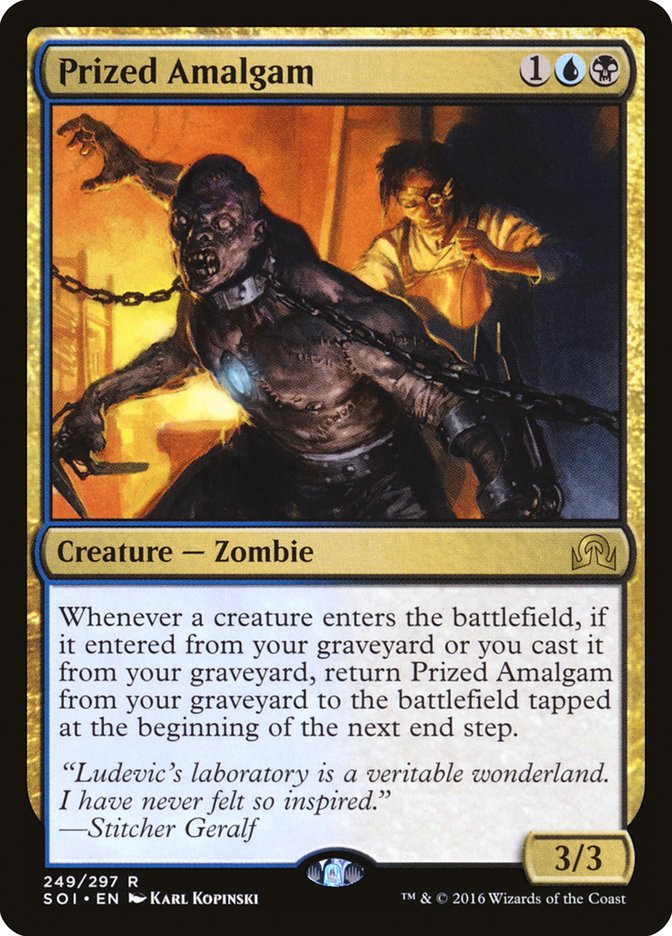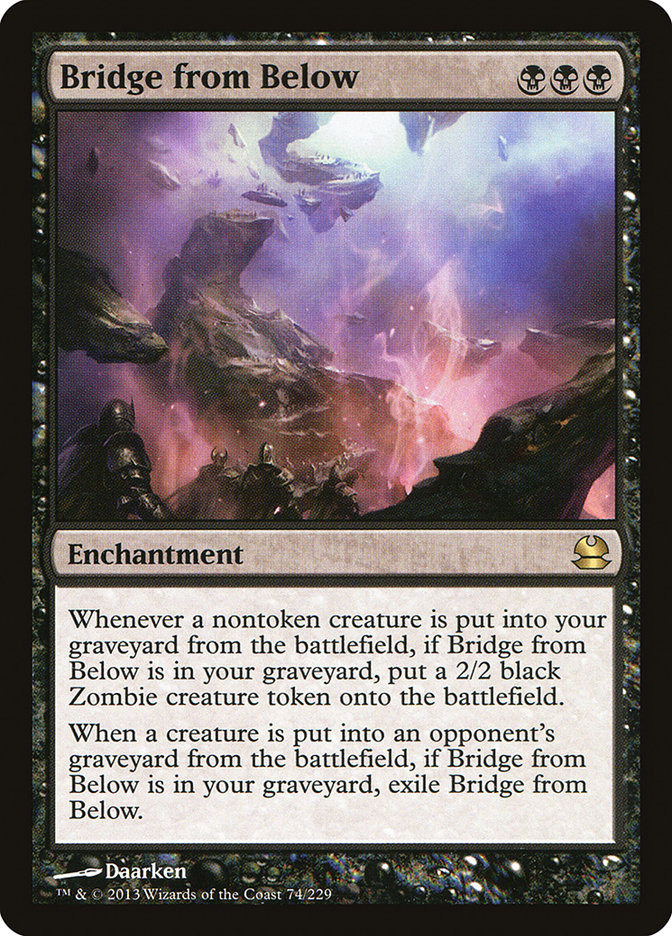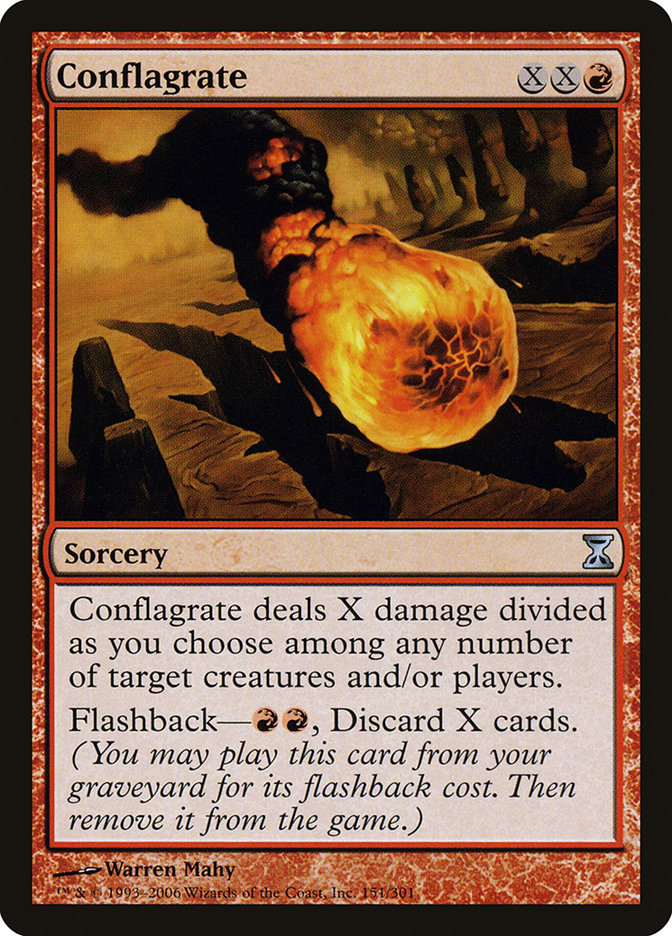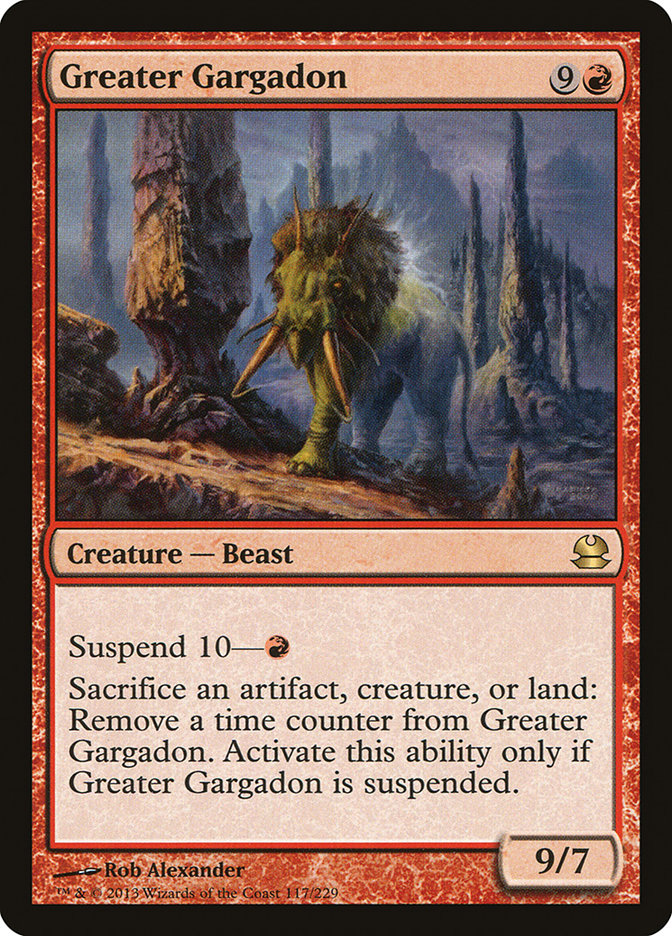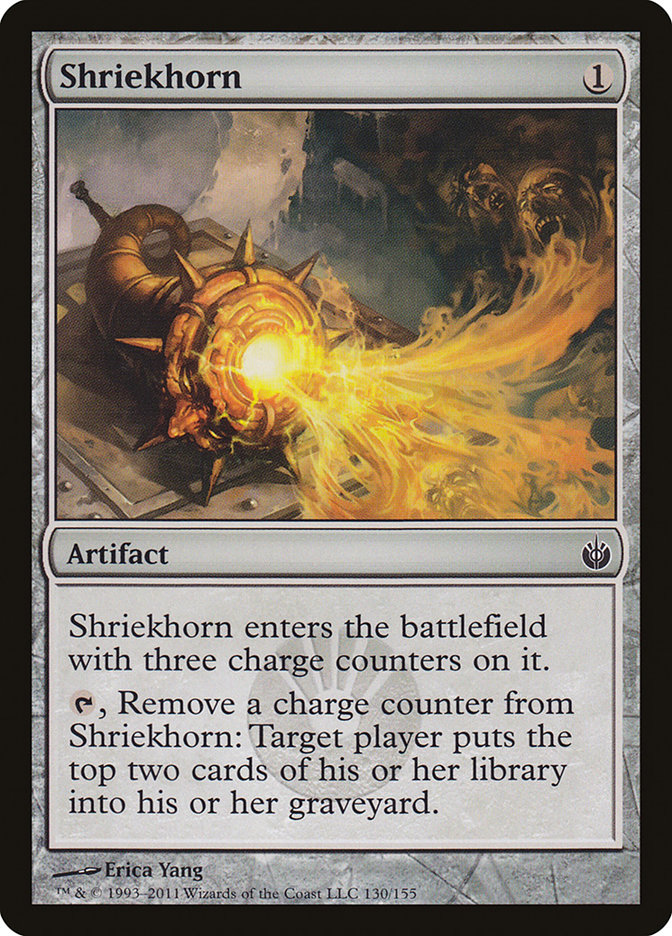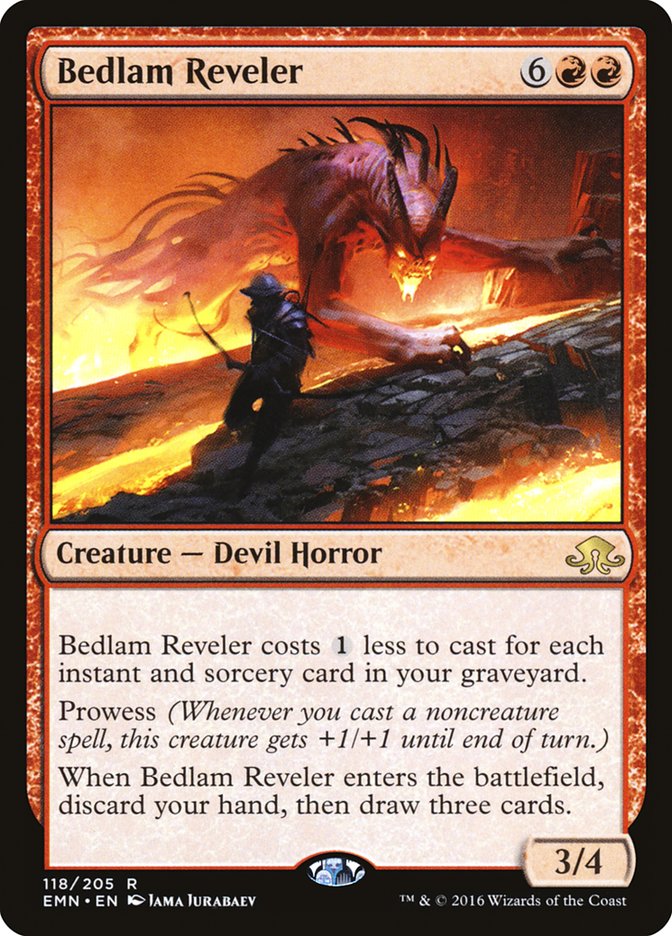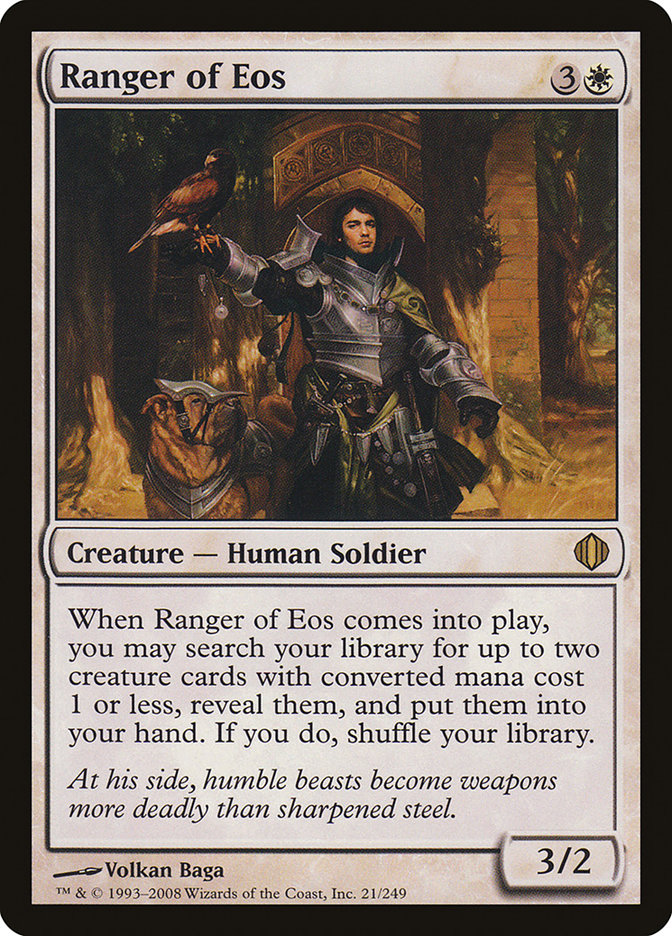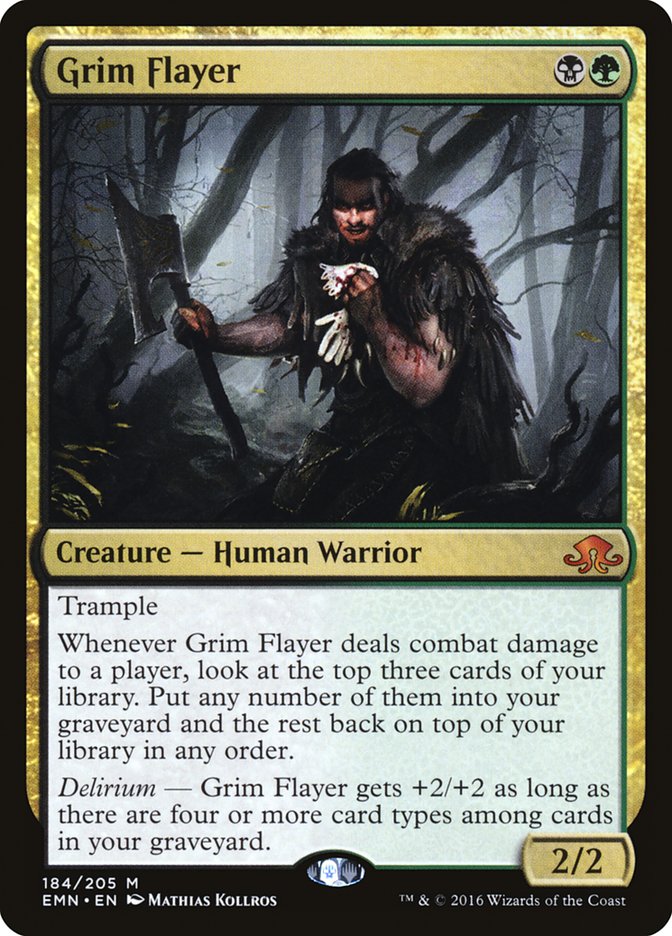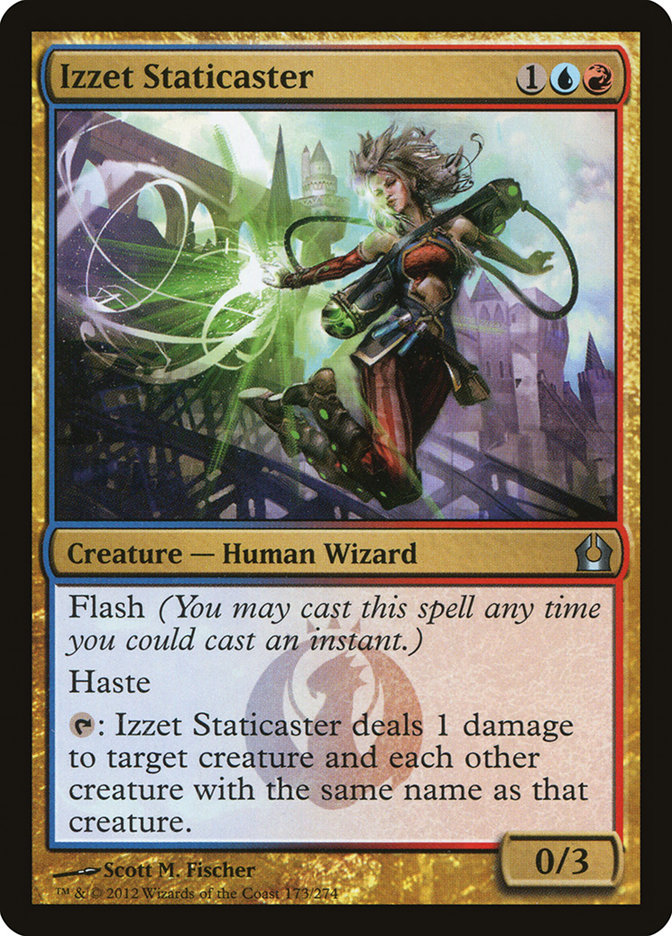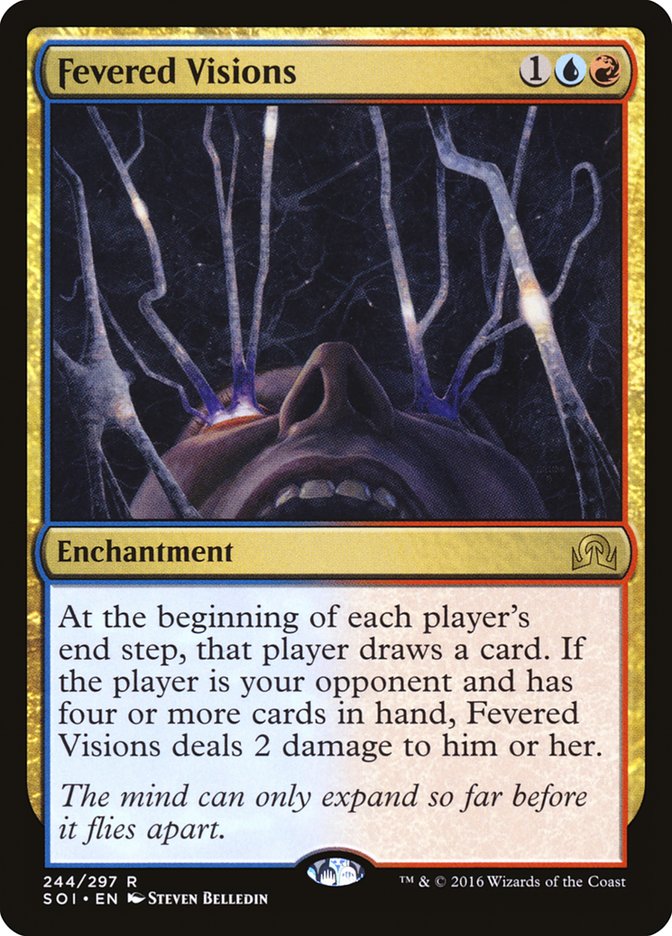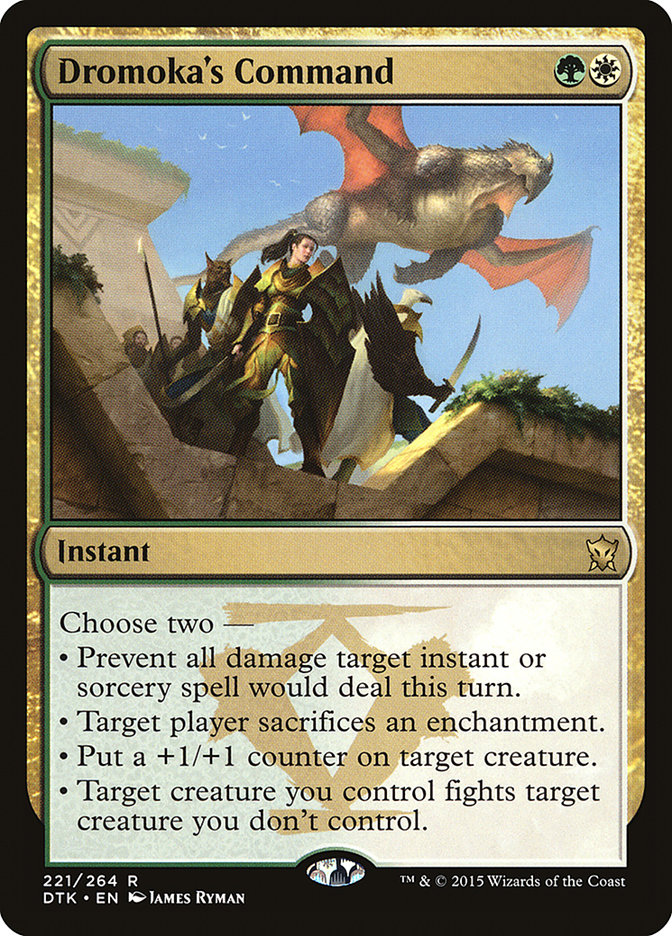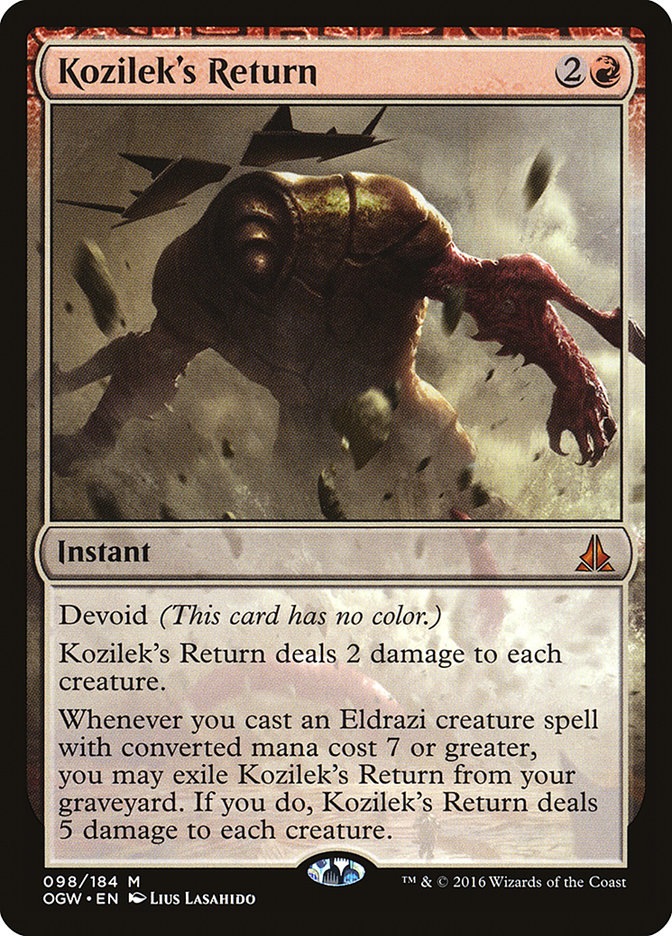This weekend, there were two major Modern events and two major Standard events: the Modern MOCS Playoff event, won by Jacob Wilson’s new take on Jund; the StarCityGames.com Modern Open in Syracuse, won by Ross Merriam with Dredge; and Standard GPs in Portland and Rimini, won by Robert Santana with Jund Delirium and Arne Huschenbeth with Bant Company, respectively.
The Dreaded Return
Looking at Modern, Dredge has been gaining popularity over the last couple months, as people have found better ways to build the deck. Currently, there’s a split between the style I’ve been playing, modeled after Zen Takahashi‘s WMCQ-winning list that supplements its Prized Amalgam-based offense with Conflagrate powered by Life from the Loam, and the new direction Ross Merriam won with, which follows a line I explored a few months ago but pushes it further, using Greater Gargadon and Bridge from Below to generate huge numbers of Zombie tokens.
I think they’re different ways of accomplishing the same goal. Basically, it’s not reliable to try to win with 3/3s and 2/1s alone; it’s too easy for the opponent to just get enough creatures that are reasonable at blocking and completely shut down your offense. You need to be able to go bigger, to accomplish what Dread Return has done for Dredge in formats where it’s legal. Conflagrate allows you to finish off blockers or simply burn the opponent out, and Bridge from Below allows you to convincingly overwhelm most opponents.
Bridge from Below goes more over the top, but it requires playing more cards that aren’t great in your opening hand, and Greater Gargadon is actually more awkward than that–it’s only good in your opening hand, but it’s also not a card that can make a hand on its own, because you still need a different way to start dredging.
I do like how much over the top the Bridge from Below direction goes, and I think the fact that it goes that far over the top likely makes your average dredges a little more powerful, which is why the deck can make slightly better use of Shriekhorn (though I don’t think Shriekhorn versus Tormenting Voice is all that closely tied with the question of “Life from the Loam plus Conflagrate” or “Bridge from Below plus Greater Gargadon”).
Either way, Dredge is great, and we reached the point where I felt it was the best fit for my general principle of Modern, which I’ve come back to often: play the most unfair deck that people aren’t sufficiently prepared for. After this weekend, I think the format may become too hostile to Dredge for a while. Basically, there haven’t been very many dedicated graveyard decks, so hate had fallen off. Dredge had started popping up as a curiosity, but it occupied too small a portion of the metagame for people to justify seriously hating it. After the attention it captured this weekend, I think people will try to make room for a few more hate cards, and I don’t think the deck can stand up to that.
I suspect that savvy online players noticed that there’s been a lot of Dredge and Death’s Shadow online recently and that Affinity hasn’t gotten a lot of attention lately, and they chose their spot, and three of them were rewarded with Top 8 finishes. Given that there was only a single Affinity player in the Top 32 in Syracuse, I’m actually not that surprised that three finished in the Top 8 of the MOCS–it looks like people were basically right to not expect it, and it’s a deck that will definitely, reliably overperform when people aren’t prepared for it.
Deathly Afraid
As for my other deck of choice, Death’s Shadow, it didn’t have a great weekend this weekend, with its only noteworthy finish coming from Josh Utter-Leyton, who finished 9th in the MOCS Playoffs with an unusual build with four Traverse the Ulvenwald main:
Creatures (18)
- 4 Street Wraith
- 1 Inner-Flame Acolyte
- 4 Death's Shadow
- 1 Ghor-Clan Rampager
- 4 Monastery Swiftspear
- 4 Gnarlwood Dryad
Lands (15)
Spells (27)

There are a lot of things going on here that are pretty sweet, but also a lot that I’m skeptical of. First of all, having more access to Death’s Shadow is great. Second, being able to tutor for haste or trample to combo people out is pretty sweet. However, fifteen lands with two basics seems really inconsistent to me, and I really don’t like the thought of having Manamorphose stuck in my hand with a deck that expects to operate on one mana a reasonable portion of the time. That said, improved access to delirium offers access to Gnarlwood Dryad, which allows the deck to cut white by replacing Wild Nacatl. This helps with some of the consistency issues presented by needing to play two basic lands. Some of the additional tutor targets, like Bedlam Reveler out of the sideboard (replacing Ranger of Eos) are appealing.
The weak showing this week by the archetype in general does give me some pause, but there are so many decks in Modern that you can’t read too much into the results of a few events. I think the core of the archetype is still very strong, and I need to explore this direction.
Grim Jund
Death’s Shadow wasn’t the only archetype to include new delirium cards, of course. As mentioned, Jacob Wilson won the event with his take on Jund that uses Grim Flayer as a two-drop to supplement Tarmogoyf (in a slot usually reserved for Dark Confidant). This change decreases the deck’s vulnerability to Lightning Bolt (if you wait until you have delirium to cast Grim Flayer against decks with Lightning Bolt) and generally works toward ending games more quickly, while the selection offered by Grim Flayer’s triggered ability can offer a little of the kind of advantage generated by Dark Confidant’s triggered ability.
Another particularly interesting twist here is the light splash for two copies of Lingering Souls, where I’m guessing Plan A is to either mill them with Grim Flayer or discard them to Liliana of the Veil. In the past, players have gone to Abzan instead of Jund largely for access to Lingering Souls, and this isn’t the first time people have just splashed Lingering Souls in Jund, but it’s interesting to see the effort made for only a pair of the card, but it might be so good where it’s good that that’s all that’s needed.
The move to Grim Flayer is interesting, and it makes me wonder about other cards in a similar vein. Maybe a few Traverse the Ulvenwalds and an Ishkanah, Grafwidow? Maybe sideboard Liliana, the Last Hope, to fill a role in matchups where Izzet Staticaster is good?
Matt Sperling even went so far as to use enchantment creatures and tribal instants, along with Grisly Salvage and even Eldrazi Temple to power out Emrakul, the Promised End in his take on G/B Delirium (Eldrazi).
Creatures (14)
- 4 Tarmogoyf
- 1 Shriekmaw
- 1 Scavenging Ooze
- 2 Courser of Kruphix
- 1 Tasigur, the Golden Fang
- 4 Thought-Knot Seer
- 1 Emrakul, the Promised End
Planeswalkers (4)
Lands (22)
Spells (20)

I could easily see a Jund deck incorporating aspects of this without going this far, or maybe this deck just also wants Grim Flayer.
Rock, Paper, Scissors, Shoot
As for Standard, the two Grand Prix told very different stories. In Rimini, I think we witnessed a perfect illustration of a tournament theory that’s generally described as a triumph of scissors.
See, the idea is that Rock is the default best deck. It’s the popular deck that does the best early in the tournament. If the tournament were smaller or shorter, it would likely win, but in a Grand Prix, there are enough rounds that there’s time for the proliferation of the best deck, Rock, to get wide enough before all trumps to that deck, Scissors, are eliminated from the tournament that the field becomes extremely soft for the remaining Scissors decks. The Scissors decks then rise to the top and win the event.
In this case, oddly, the most popular deck in the format so far, Bant Company, plays the role of Scissors. The story is a bit different here, in that Bant was still the most-played deck, but its dominance over the second most-played deck contributed to the stark results we saw in the Top 8.
After the Pro Tour, Emerge, Emrakul, Delirium, and control decks of all flavors got top billing, but hidden just below that was Pedro Carvalho’s U/R Thermo-Alchemist deck that abuses Fevered Visions, which had the third-best finish in the Standard portion of the event and has an excellent matchup against all of those decks.
Bant Company was underrepresented at the Pro Tour and reportedly underperformed. If players were expected to follow the lessons from the Pro Tour, Bant Company would drop off and Fevered Visions would be an excellent choice. The problem, as I understand it, is that many people in Rimini came to the same conclusion. U/R Thermo-Alchemist became so popular that all the remaining Bant Company decks rose to the top, and by the end, there were six Bant Company decks and two U/R Thermo-Alchemist decks in the Top 8.
Partially, I think this is because the death of Bant Company was generally overstated, and partially, I think people learned how to build their Bant Company decks to beat the new field. Bant Company is a deck that’s always benefited possibly more than people expect from sideboarding, and small adjustments can have big impacts because it’s common for players to see so many cards in their deck in each game. Paul Rietzl surprised coverage and opponents by entirely cutting Dromoka’s Command, previously the single most successful card in the format, from the deck, a decision supported by the results in Rimini, where none of the top three Bant Company decks played the full four Dromoka’s Commands, a change that would have been almost unthinkable a month ago.
Dromoka’s Command has been so widespread that I’d guess a vast majority of Bant decks in both tournaments played four, so it’s noteworthy that even decks with three seemed to rise to the top in both events, which makes me guess that cutting additional copies is likely still correct.
In Portland, U/R Thermo-Alchemist was still popular, but it was only two-thirds as popular as it had been in Rimini, and it was less popular than G/B Delirium. In both events, Bant Company was around a third of Day 2 decks. In Portland, while we still saw a strong showing for Bant Company, the Top 8 was substantially more diverse with five different decks occupying the five slots that weren’t Bant Company: Jund Delirium, W/B Control, Grixis Pact, Temur Emerge, and B/G Delirium.
Also noteworthy, Cody Lingelbach (a name you should pay attention to, as he made the Top 8 of two Standard GPs earlier this year, also with interesting decks that fit the metagame particularly well in the moment) finished 9th with U/G Crush of Tentacles, an archetype many dismissed even though it was very strong a few weeks ago in the hands of Cory Dissinger.
Creatures (11)
Lands (24)
Spells (25)

This deck and Chris Botelho’s Demonic Pact deck were the highlights of the tournament for people looking for cool new decks, while Paul Rietzl’s Bant Company for people who appreciate solid metagaming with the best deck.
Robert Santana’s winning deck is noteworthy for me primarily for how little effort it puts into its Kozilek’s Return plan. Robert played only three creatures that could actually trigger Kozilek’s Return, but thanks to Grapple with the Past and Traverse the Ulvenwald, that’s all that’s needed. This opens up a lot of room to play Magic with cheap removal spells to avoid falling behind from spending mana on Grapple with the Past and Vessel of Nascency.
Moving forward, I think Bant Company will be the deck to beat until Collected Company rotates out of Standard, but I think Grand Prix Portland was a fantastic event for keeping the format fresh, offsetting the troubling results of Grand Prix Rimini.
Somewhat shockingly, there are no Standard GPs until rotation, so from here, the format will be shaped entirely by Regional PTQs and the StarCityGames.com Invitational in New Jersey this weekend, and then the Standard Open in Richmond September 3-4th.
For those of you wondering what to play in those upcoming Standard events, since I wasn’t playing in Portland, I’ve just been playing Modern, so the best I can offer is this: you can’t go wrong with Bant Company, but if you want to play something else, my teammates played this in Portland, and felt that the deck was excellent both in general and specifically against Bant Company, and that with a little more practice, the Top 8 could easily have been in reach:
Creatures (21)
- 4 Jace, Vryn's Prodigy
- 2 Nissa, Vastwood Seer
- 1 Gilt-Leaf Winnower
- 4 Prized Amalgam
- 4 Elder Deep-Fiend
- 4 Haunted Dead
- 1 Distended Mindbender
- 1 Ishkanah, Grafwidow
Lands (22)
Spells (17)

This deck follows the path Ari Lax has advocated, trying to break the various graveyard mechanics that have accumulated in Standard. Temur Emerge has suffered from people learning to kill its three-drops, but it’s harder to keep Sultai Emerge from emerging at some point due to the relentless nature of Haunted Dead and Prized Amalgam. Also, the two form a reasonable backup plan that offers inevitability going long against the control decks of the format.
I won’t be attending the StarCityGames.com Invitational, but if I were, I’d probably play Sultai Emerge and either Death’s Shadow or G/W Hexproof. I don’t have any experience with Slippery Bogle, but if you think people will be attracted to Dredge rather than scared off by its recent success, it’s hard to do better than Hexproof in that matchup, and it has the added benefit of fulfilling my criteria of being a powerful proactive deck that I wouldn’t expect people to be specifically targeting at the moment.


